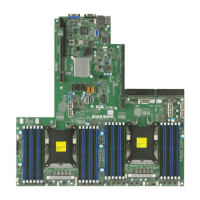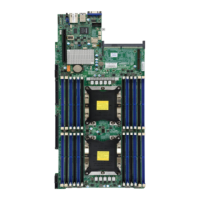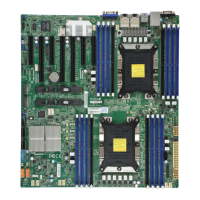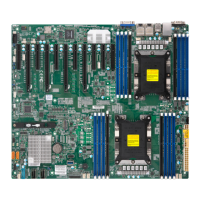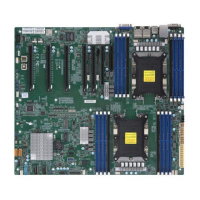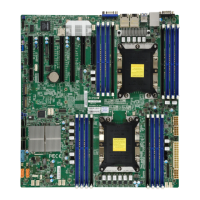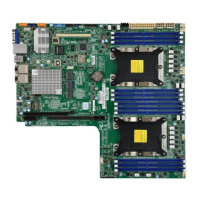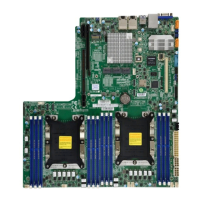Do you have a question about the Supermicro X11DPL-i and is the answer not in the manual?
Describes the target audience and purpose of the manual.
Provides a summary of the motherboard's capabilities and features.
Outlines the structure and content of each chapter in the manual.
Provides essential precautions for handling ESD-sensitive components.
Guides on installing the motherboard into the chassis.
Details the procedure for installing CPUs and heatsinks.
Explains memory compatibility and installation steps.
Identifies and defines the external connectivity ports.
Describes connectors for chassis front panel buttons and LEDs.
Details power connectors (ATX, CPU) and their pinouts.
Explains jumper functionality and specific settings like CMOS clear.
Describes the status indication provided by system LEDs.
Lists the available PCI-E slots and their configurations.
Offers steps to diagnose and resolve system issues.
Guides on how to contact technical support effectively.
Addresses common user queries about the motherboard.
Provides instructions for handling the CMOS battery.
Outlines the process for warranty service and RMA.
Lists essential parts included with the motherboard shipment.
Provides URLs for drivers, manuals, and support.
Details the supported processors and the chipset.
Describes unique functionalities like system health monitoring.
Explains how the system monitors voltage, fans, and temperature.
Details Advanced Configuration and Power Interface features.
Emphasizes the need for a stable power source for reliable operation.
Covers features like Management Engine (ME).
Summarizes jumper and connector definitions for quick lookups.
Details processor support, including UPI links and TDP.
Specifies memory types, speeds, and slot count supported.
Lists all PCI-E slots, M.2 interface, and their configurations.
Describes SATA ports, RAID support, and peripheral connections.
Lists BIOS features like flash ROM, ACPI support, and SMBIOS version.
Covers ACPI power management and Intel Intelligent Power Node Manager.
Details voltage, temperature, and status monitoring capabilities.
Discusses TPM, PECI, SuperDoctor, and chassis intrusion.
Lists and describes the function of various system LEDs.
Introduces the AMI BIOS Setup utility and its navigation.
Describes the initial BIOS screen and its main features like system date/time.
Covers detailed BIOS settings for CPU, memory, and chipset.
Explains how to configure and manage system event logs.
Details Intelligent Platform Management Interface settings.
Covers password protection and secure boot configurations.
Describes boot mode selection and device priority settings.
Explains how to save changes and exit the BIOS setup.
Lists beep codes for POST errors and their meanings.
References online documentation for additional POST checkpoint codes.
Guides on installing drivers and utilities from Supermicro.
Describes the SuperDoctor 5 hardware monitoring tool.
Provides warnings regarding battery replacement safety.
Gives instructions for the proper disposal of the product.
Introduces UEFI and BIOS recovery concepts.
Explains the process of recovering the BIOS image.
Details BIOS recovery using a USB device.
| USB 2.0 ports quantity | 4 |
|---|---|
| USB 3.2 Gen 1 (3.1 Gen 1) Type-A ports quantity | 3 |
| Supported DIMM module capacities | 64GB, 128MB |
| Memory voltage | 1.2 V |
| Supported memory types | DDR4-SDRAM |
| Maximum internal memory | 128 GB |
| Supported memory clock speeds | 2133, 2400, 2666 MHz |
| RAID levels | 0, 1, 5, 10 |
| Wi-Fi | No |
| Ethernet LAN | Yes |
| Ethernet interface type | Gigabit Ethernet |
| System bus rate | 10.4 GT/s |
| Processor manufacturer | Intel |
| Processor thermal power (max) | 140 W |
| PCI Express x16 (Gen 3.x) slots | 2 |
| BIOS type | UEFI AMI |
| Motherboard chipset | Intel® C621 |
| Motherboard form factor | ATX |
| Harmonized System (HS) code | 84733020 |
| Depth | 257.8 mm |
|---|---|
| Width | 306.7 mm |
